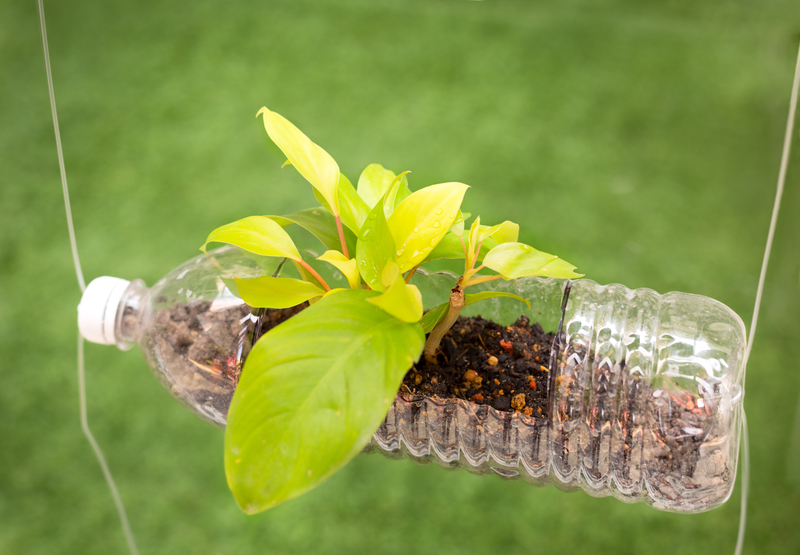Reduce Environmental Impact with Safe PPE Waste Practices
Personal Protective Equipment (PPE) has become an essential part of our daily lives, especially during global health crises such as the COVID-19 pandemic. However, as crucial as these items are for individual and community safety, the improper disposal of PPE can have serious environmental consequences. Safe PPE waste practices are vital for reducing the environmental impact and safeguarding our planet's future. This article will explore how to minimize the environmental footprint of PPE waste, best practices for disposal, innovations in reusable and biodegradable PPE, and how individuals and organizations can contribute to a healthier planet.

Understanding PPE Waste and Its Environmental Consequences
What is PPE Waste?
PPE includes items such as masks, gloves, face shields, gowns, and shoe covers. These products are designed for single use in many settings, particularly healthcare, to prevent contamination and disease transmission.
Increased reliance on PPE has led to a surge in waste production. According to numerous global studies, billions of disposable masks and gloves enter our environment each month, much of which ends up in landfills, incinerators, or, worse, our oceans.
The Environmental Impact of PPE Pollution
- Non-biodegradable materials: Most PPE is made from plastics like polypropylene, which can take hundreds of years to decompose.
- Wildlife threats: Masks and gloves can be mistaken as food or entangle marine life and birds, causing injury or death.
- Microplastic contamination: As PPE breaks down, it releases microplastics, polluting water sources and entering the food chain.
- Increased landfill pressure: The additional volume of medical waste strains already-full landfills, contributing to greenhouse gas emissions.
Reducing PPE waste's environmental impact requires a collective effort to adopt safe and sustainable disposal methods while exploring green alternatives.
Best Practices: Safe Disposal of PPE Waste
Safe Disposal Guidelines for Individuals
Proper PPE waste management starts at the individual level. Here are key steps to follow:
- Do not litter: Never discard used masks, gloves, or other PPE on streets, parks, or waterways.
- Use designated PPE bins: Place contaminated PPE in sealed bags before disposing of it in appropriate receptacles, separate from recyclables.
- Do not flush PPE: Items like masks and gloves can clog sewage systems and pollute water bodies if flushed down toilets.
- If possible, cut the ear loops of masks: This prevents entanglement of wildlife.
- Follow local regulations: Always adhere to your municipality's waste disposal guidelines, which may provide specific instructions for dealing with biomedical waste during outbreaks.
Medical and Institutional PPE Waste Management
Healthcare facilities, laboratories, and institutions generate higher volumes of PPE waste, much of which is potentially infectious. Safe handling is paramount:
- Segregation: Separate PPE waste from general and recyclable waste at the source.
- Color-coded bins: Use red or yellow bins as per hazardous waste guidelines to minimize cross-contamination.
- Double bagging: Especially for infectious materials, double bagging reduces the risk of leakage and exposure for waste handlers.
- Timely collection: Regular removal and transport to appropriate treatment facilities are crucial.
- On-site sterilization: When possible, institutions can use autoclaves or incinerators to process waste before final disposal.
These best practices ensure safe PPE disposal while significantly mitigating environmental risks.
Innovative Solutions: Reusable and Eco-Friendly PPE Options
Reusable PPE: The Sustainable Alternative
As awareness of PPE pollution grows, manufacturers and organizations are turning to reusable PPE. Reusable face masks made from cloth and washable gloves are now widely available. Benefits of reusable PPE include:
- Reduced waste: Fewer disposables mean less landfill and ocean pollution.
- Cost savings: Although the initial investment may be higher, reusable PPE offers economic advantages over time.
- Resource conservation: Manufacturing reusable items generally consumes fewer resources over their lifecycle compared to mass-producing disposables.
*It's essential to ensure that all reusable PPE meets safety standards and is properly sanitized after each use to remain effective.*
Biodegradable and Compostable PPE
The advance of green technology has led to the creation of biodegradable PPE crafted from plant-based or compostable materials. Examples include:
- Bioplastics: Derived from cornstarch or sugarcane, these masks and gloves break down in months instead of centuries.
- Cellulose-based face shields: Unlike polycarbonate versions, these can be safely composted.
- Mushroom-root (mycelium) materials: Known for rapid decomposition and minimal environmental impact.
Switching to eco-friendly PPE supports the goal of reducing PPE waste's impact on the environment and opens innovative pathways for the future.
Corporate Responsibility: How Businesses Can Reduce PPE Waste Impact
PPE Waste Reduction Strategies for the Workplace
Businesses play a significant role in the PPE supply and waste chain. Here are effective ways companies can demonstrate environmental stewardship:
- PPE usage audits: Regularly track PPE consumption to reduce unnecessary use and focus on efficiency.
- Switch to reusable PPE where appropriate: Encourage the use of washable masks and clothing among employees.
- Set up dedicated collection points: Create PPE-specific disposal bins in accessible areas.
- Partner with certified waste processors: Ensure collected PPE waste is treated by professionals who adhere to best safety and environmental practices.
- Employee Training: Educate staff about the importance of safe PPE disposal methods and environmental impact reduction.
Green Procurement Policies
Choosing suppliers who prioritize sustainable PPE manufacturing helps reduce the environmental impact upstream. This may involve:
- Asking for eco-certifications: Verify that products are made sustainably and comply with environmental standards.
- Supporting local production: Minimizes logistics emissions and supports community economies.
- Encouraging innovation: Work with partners to develop and pilot biodegradable and recyclable PPE products.
Corporate commitment to reducing PPE pollution not only protects the environment but also enhances a brand's reputation and meets increasing consumer demand for sustainability.
Role of Community Awareness and Government
Community Initiatives to Curb PPE Waste
Local organizations, NGOs, and volunteers are crucial in spreading awareness and promoting safe PPE waste practices. Examples of community actions include:
- PPE clean-up drives: Local events that target polluted beaches, parks, or urban spaces.
- Public education campaigns: Social media, posters, and workshops informing citizens about proper PPE disposal methods and environmental risks.
- Pilot recycling programs: Some regions have started PPE recycling initiatives, where used items are collected, sterilized, and processed into building materials or energy.
Empowering individuals to take responsibility for their PPE disposal fosters sustainable habits and a safer environment for all.
Policy and Regulation: The Government's Role
Governments worldwide are enacting regulations to address the growing concern of PPE waste. Effective policies might include:
- Mandatory separation and labeling of PPE in waste streams.
- Investment in new waste treatment technologies, such as high-temperature incineration and advanced recycling.
- Incentives for companies that develop or use biodegradable PPE.
- Public guidelines and mass communication to educate citizens on safe PPE disposal and alternatives.
These actions, taken at local and national levels, are vital for reducing the long-term environmental impact of PPE.
How You Can Help: Steps for Individuals and Families
Everyone has a part to play in minimizing PPE waste's environmental footprint. Here are simple steps anyone can implement:
- Choose reusable PPE when viable, especially where medical-grade protection is not required.
- Dispose of used PPE responsibly and encourage family members to do the same.
- Participate in local clean-up or recycling initiatives.
- Support brands and companies offering eco-friendly PPE solutions.
Champion the cause by raising awareness in your network through conversation, social media, or community engagement.

The Future of PPE: Innovations and Global Trends
Technological Advances
Scientists and entrepreneurs are racing to create the next generation of PPE that balances efficacy and ecology. Exciting innovations include:
- Self-sanitizing masks with antimicrobial coatings, prolonging usage and reducing waste.
- Smart PPE with embedded sensors to monitor air quality and usage.
- Closed-loop recycling systems specifically for PPE waste.
International Collaboration
Addressing the PPE waste crisis requires cross-border partnerships. Leading organizations like the World Health Organization (WHO) and United Nations Environment Programme (UNEP) are working with countries to develop global standards for safe and sustainable PPE waste management.
As the world moves toward a future shaped by climate resilience and eco-consciousness, safe PPE practices will remain crucial in protecting both our health and the planet.
Conclusion: Act Now to Reduce Environmental Impact with Safe PPE Waste Practices
The surge in PPE usage has helped protect lives but also introduced new environmental challenges. By adopting safe PPE waste practices at every level--individual, corporate, community, and government--we can drastically reduce the environmental impact of PPE and build more sustainable habits.
Whether by choosing reusable options, demanding biodegradable alternatives, or participating in clean-up and education efforts, every action makes a difference. It is our collective responsibility to ensure that our pursuit of safety does not come at the environment's expense.
